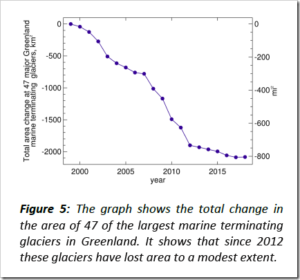by World Nuclear Association, updated July 2017
-
Production from world uranium mines now supplies 90% of the requirements of power utilities.
-
Primary production from mines is supplemented by secondary supplies, formerly most from ex-military material but now the products of recycling and stockpiles built up in times of reduced demand.
-
World mine production has expanded significantly since about 2005.
All mineral commodity markets tend to be cyclical, i.e. prices rise and fall substantially over the years, but with these fluctuations superimposed on long-term trend decline in real prices, as technological progress reduces production cost at mines. In the uranium market, however, high prices in the late 1970s gave way to depressed prices in the whole of the period of the 1980s and 1990s, with spot prices below the cost of production for all but the lowest cost mines. Spot prices recovered from 2003 to 2009, but have been weak since then.
The quoted spot prices through to about 2007 applied only to day-to-day marginal trading and represented a small portion of supply, though since 2008 the proportion has approximately doubled, to about one-quarter in the last decade. Most trade is via 3-15 year term contracts with producers selling directly to utilities at a significantly higher price than the spot market, reflecting the security of supply.* The specified price in these contracts is, however, often related to the spot price at the time of delivery. However, as production has risen much faster than demand, fewer long-term contracts are being written.
…
by Judith Curry, May 22, 2019 in ClimateEtc.
The House Natural Resources Committee Subcommittee on Water, Oceans and Wildlife is holding a Hearing today on Responding to the Global Assessment Report of the Intergovernmental Science-Policy Platform on Biodiversity and Ecosystem Services.
The link to the Hearing page is here [link].
Based on my previous experience with this Committee, the written testimonies will not be posted, and the Hearing will live stream on their Facebook page [link]
Here is the list of witnesses:
- Sir Robert Watson, Immediate Past Chair IPBES
- Dr. Eduardo S. Brondizio, Co-Chair IPBES Global Assessment
- Dr. Yunne Shin, Coordinating Lead Author, IPBES Global Assessment
- Dr. Patrick Moore, Chairman CO2 Coalition [link to written testimony Moore]
- Mr. Marc Morano, Founder Climate Depot [link to written testimony Morano]
- Dr. Jacob Malcolm, Director Center for Conservation Innovation, Defenders of Wildlife
Quite an interesting list. Clearly some of the leading honchos for the IPBES Report. Surprised that the Republicans apparently got to pick several witnesses.
Having Marc Morano on this list is like waving a red cape before a bull. True to form, Marc has prepared an extremely hard hitting report for his written testimony, which was sent to me (and others) via email. Excerpts from Morano’s testimony are provided below:
…
by Roland Pease, May 21, 2019 in Science
Last week, Marc Chaussidon, director of the Institute of Geophysics in Paris (IPGP), looked at seafloor maps from a recently concluded mission and saw a new mountain. Rising from the Indian Ocean floor between Africa and Madagascar was a giant edifice 800 meters high and 5 kilometers across. In previous maps, there had been nothing. “This thing was built from zero in 6 months!” Chaussidon says.
His team, along with scientists from the French national research agency CNRS and other institutes, had witnessed the birth of a mysterious submarine volcano, the largest such underwater event ever witnessed. “We have never seen anything like this,” says IPGP’s Nathalie Feuillet, leader of an expedition to the site by the research vessel Marion Dufresne, which released its initial results last week.
The quarter-million people living on the French island of Mayotte in the Comoros archipelago knew for months that something was happening. From the middle of last year they felt small earthquakes almost daily, says Laure Fallou, a sociologist with the European-Mediterranean Seismological Centre in Bruyères-le-Châtel, France. People “needed information,” she says. “They were getting very stressed, and were losing sleep.”
…
by P. Homewood, May 22, 2019 in NotaLotofPeopleKnowThat
European satellites have detailed the abrupt change in behaviour of one of Greenland’s most important glaciers.
In the 2000s, Jakobshavn Isbrae was the fastest flowing ice stream on the island, travelling at 17km a year.
As it sped to the ocean, its front end also retreated and thinned, dropping in height by as much as 20m year.
But now it’s all change. Jakobshavn is travelling much more slowly, and its trunk has even begun to thicken and lengthen.
“It’s a complete reversal in behaviour and it wasn’t predicted,” said Dr Anna Hogg from Leeds University and the UK Centre for Polar Observation and Modelling (CPOM).
“The question now is: what’s next for Jakobshavn? Is this just a pause, or is it a switch-off of the dynamic thinning we’ve seen previously?”
The rapid flow, thinning and retreat of Jakobshavn’s front end in the mid to late 2000s were probably driven by warm ocean water from Disko Bay getting into the fjord and attacking the glacier from below.
The phase change, scientists think, may be related to very cold weather in 2013. This would have resulted in less meltwater coming off the glacier, which in turn might have choked the mechanism that pulls warm ocean water towards Jakobshavn.
…

…
La géologie, une science plus que passionnante … et diverse

